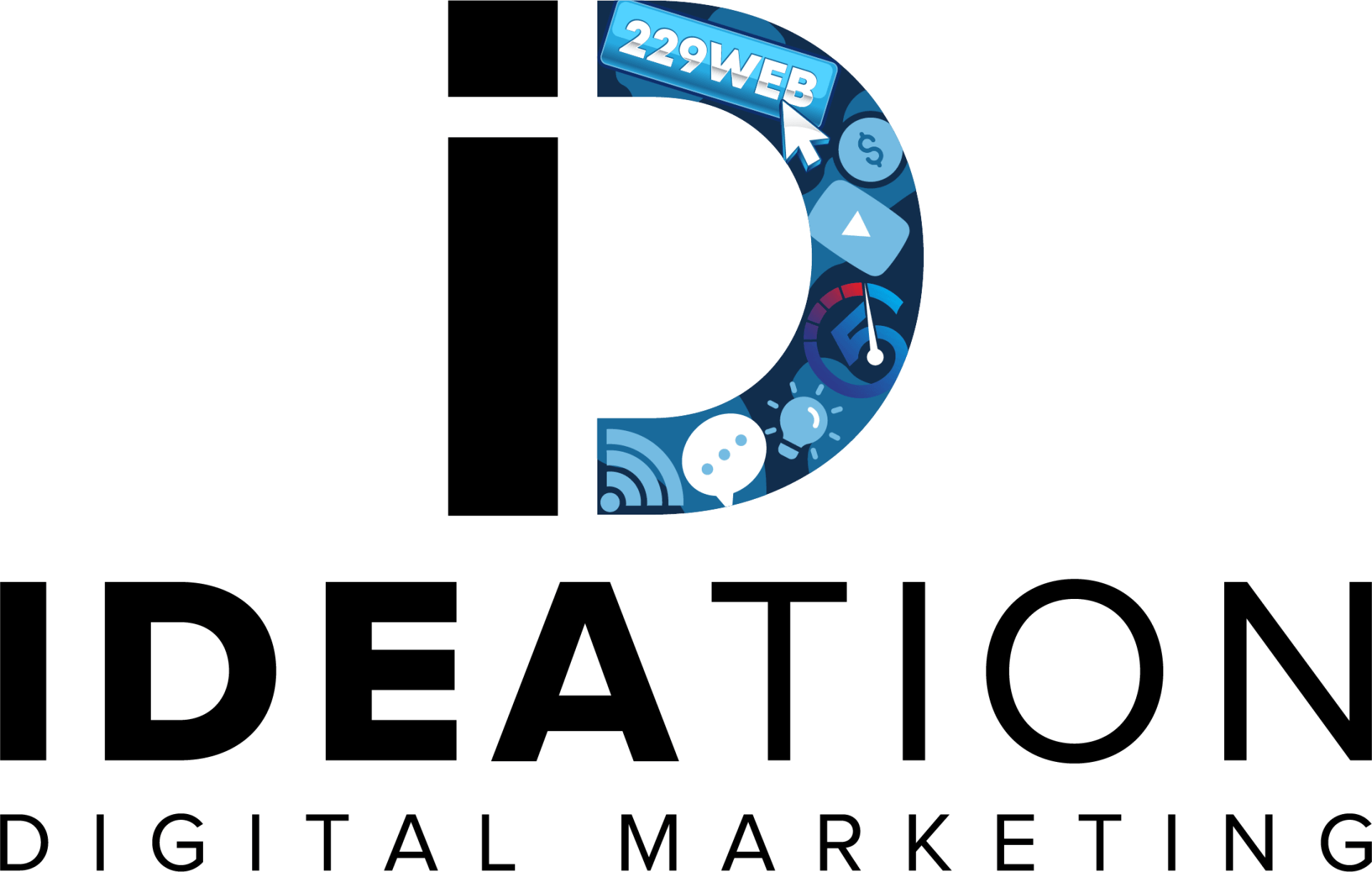Facebook Video Ad Thumbnail Tips: How to Create Engaging Thumbnails That Boost Ad Performance

In the competitive world of social media advertising, your Facebook video ad thumbnail serves as the crucial first impression that can make or break your campaign's success. Even the most compelling video content may go unwatched if the thumbnail fails to capture attention in crowded news feeds. Creating effective thumbnails isn't just about aesthetic appeal—it's a strategic marketing decision that directly impacts your click-through rates, engagement metrics, and ultimately, your return on ad spend.
This comprehensive guide explores everything you need to know about creating high-performing Facebook video ad thumbnails, from technical specifications and design best practices to testing methodologies and performance optimization. Whether you're new to Facebook advertising or looking to refine your existing approach, these actionable insights will help you create thumbnails that stop the scroll and drive meaningful engagement with your video content.
What Is the Ideal Facebook Ad Thumbnail Size for Video Ads?
Creating thumbnails with the correct dimensions is essential for professional presentation across all devices and placements. Facebook's platform has specific requirements that, when followed, ensure your thumbnails display optimally throughout their ecosystem.
What Are the Recommended Dimensions for Facebook Video Ad Thumbnails?
Facebook recommends the following specifications for video ad thumbnails:
•Resolution: 1280 x 720 pixels (16:9 aspect ratio) is the standard recommendation
•Minimum width: 600 pixels
•Image ratio: Maintained at 16:9 for most placements
•File format: PNG or JPG
•File size: Less than 5MB
•Text overlay: Limited to 20% of the thumbnail area (though this rule has become more of a recommendation than a strict requirement)
These specifications ensure your thumbnail appears crisp and professional across Facebook's various placements. Using lower resolution images can result in pixelation or blurriness, particularly on high-resolution displays, while exceeding the recommended dimensions unnecessarily increases load time without improving visual quality.
How Do Thumbnail Sizes Vary by Facebook Ad Placement?
Thumbnail requirements can vary slightly depending on where your ad will appear:
1.News Feed Ads:
•Standard 16:9 aspect ratio (1280 x 720 pixels)
•Visible area approximately 500 x 281 pixels on desktop
•Mobile display varies by device but maintains aspect ratio
2.In-Stream Video Ads:
•16:9 aspect ratio strongly recommended
•Higher resolution important as these appear within other video content
3.Right Column Ads:
•Thumbnails display smaller (approximately 254 x 133 pixels)
•Still maintain 16:9 ratio but with less visible detail
4.Marketplace Ads:
•Similar to News Feed specifications
•16:9 aspect ratio recommended
5.Audience Network:
•Various sizes depending on placement
•Safe approach is to design for 16:9 and ensure key elements are centered
6.Instagram Feed (when running cross-platform campaigns):
•Square (1:1) or vertical (4:5) often performs better
•May require creating separate thumbnails for optimal performance
Understanding these variations helps you optimize thumbnails for specific placements or create versatile designs that work well across multiple placements if you're running broad campaigns.
How to Resize and Optimize Thumbnails for Different Devices?
With users accessing Facebook across various devices—from small smartphones to large desktop monitors—your thumbnails must look compelling regardless of screen size:
1.Focus on the center: Place key visual elements and text in the center of your thumbnail, as edges may be cropped on certain placements or devices.
2.Test on multiple devices: Preview your thumbnails on both desktop and mobile devices before finalizing to ensure readability and visual impact at different sizes.
3.Consider safe zones: Implement a "safe zone" approach by keeping essential elements within the middle 70% of the thumbnail to prevent important content from being cut off.
4.Optimize file size: Compress images appropriately to ensure fast loading without sacrificing quality. Tools like TinyPNG or ImageOptim can reduce file size while maintaining visual integrity.
5.Use responsive design principles: If creating custom thumbnails, apply responsive design thinking by ensuring text is large enough to read on small screens.
6.Account for dark and light modes: Test how your thumbnail appears in both dark and light interfaces, as contrast can change dramatically between these viewing modes.
7.Consider device-specific versions: For major campaigns, create device-specific thumbnail versions optimized for different viewing experiences.
By accounting for these variables during the design process, you can ensure your thumbnails maintain their impact regardless of how and where they're viewed.
How Can You Design Effective Facebook Video Ad Thumbnails?
Beyond technical specifications, the creative elements of your thumbnail design significantly influence whether users will click to watch your video.
What Are the Key Elements of an Engaging Thumbnail?
The most effective Facebook video ad thumbnails typically incorporate these elements:
1.Clear focal point: A single, obvious subject that immediately communicates what the video is about. Avoid cluttered compositions that make it difficult for viewers to understand the content at a glance.
2.Human faces: Thumbnails featuring close-up human faces with visible emotions typically outperform abstract images or product-only shots. Our brains are naturally drawn to human faces, especially those displaying strong emotions.
3.High contrast: Strong contrast between elements helps thumbnails stand out in busy feeds. This can be achieved through color contrast, size contrast, or conceptual contrast (unexpected juxtapositions).
4.Brand consistency: Visual elements that align with your overall brand identity help with recognition and trust-building over time.
5.Curiosity gap: Visual elements that create intrigue or pose a question without being misleading. The thumbnail should promise something interesting that the video will deliver.
6.Action shots: Dynamic images that capture movement or action tend to be more engaging than static compositions, suggesting that the video contains engaging content.
7.Relevant text overlay: Brief, high-impact text that complements the visual (while keeping within the 20% text recommendation). Text should enhance, not repeat, what the image already communicates.
8.Visual hierarchy: Clear organization of elements that guides the viewer's eye to the most important information first, then to secondary elements.
9.Authenticity: Images that appear genuine rather than overly staged or stock-photo-like tend to perform better as users become increasingly savvy about advertising.
10.Context clues: Visual indicators that help viewers understand what type of content they'll see (tutorial, testimonial, product demonstration, etc.) if they click.
Incorporating these elements strategically helps create thumbnails that not only attract attention but also set appropriate expectations for the video content.
How to Use Colors and Fonts to Enhance Thumbnail Appeal?
Color and typography choices significantly impact thumbnail effectiveness:
Color Strategies:
1.Brand color integration: Incorporate your primary brand colors to maintain consistency and build recognition.
2.Contrast principles: Use complementary colors (opposite on the color wheel) to create maximum contrast and visual impact.
3.Color psychology: Leverage color associations—red for urgency or excitement, blue for trust and reliability, yellow for optimism and attention-grabbing.
4.Pattern interruption: Consider using colors that stand out from Facebook's blue and white interface (oranges, bright greens, and high-contrast combinations often work well).
5.Color blocking: Use bold areas of solid color to create simple, eye-catching compositions that stand out in busy feeds.
6.Saturation adjustment: Slightly increase color saturation compared to your normal brand guidelines to compensate for how colors appear in the feed environment.
Font Considerations:
1.Legibility first: Choose fonts that remain readable at small sizes and on mobile devices. Sans-serif fonts typically work better than serif fonts for thumbnails.
2.Font weight: Bold or heavy font weights generally outperform light or regular weights in the competitive feed environment.
3.Character spacing: Slightly increased letter spacing improves readability for short text phrases in thumbnails.
4.Font pairing: If using multiple fonts, ensure they complement each other while providing sufficient contrast (typically one serif and one sans-serif, or one bold and one regular weight).
5.Text hierarchy: If using multiple text elements, create clear size differentiation between primary and secondary messages.
6.Brand consistency: Use fonts from your brand guidelines when possible, but don't hesitate to use bolder weights or larger sizes than you might in other applications.
7.Contrast with background: Ensure text has sufficient contrast with the background—consider adding subtle shadows, highlights, or semi-transparent backgrounds behind text to improve readability.
When combining color and typography, aim for a balanced approach that creates visual impact while maintaining professional quality and brand alignment.
What Common Thumbnail Design Mistakes Should You Avoid?
Even experienced marketers can fall into these common thumbnail design pitfalls:
1.Clickbait imagery: Using misleading images that don't accurately represent the video content may increase initial clicks but leads to rapid disengagement, negative feedback, and potential account penalties.
2.Overcrowding: Trying to include too many elements or messages in a single thumbnail, creating visual confusion rather than clarity.
3.Poor contrast: Using colors or text that blend into the background or don't stand out in the Facebook interface.
4.Generic stock photos: Relying on obvious stock imagery that feels inauthentic and fails to differentiate your content.
5.Tiny text: Using text that's too small to read on mobile devices, where most Facebook browsing occurs.
6.Inconsistent branding: Creating thumbnails that don't visually connect to your other marketing materials, missing opportunities for brand reinforcement.
7.Low-quality images: Using blurry, pixelated, or poorly cropped images that suggest unprofessional content.
8.Ignoring the content: Creating visually striking thumbnails that don't actually represent what the video is about, leading to viewer disappointment.
9.Excessive text: Overloading the thumbnail with too much text, making it difficult to read quickly and potentially triggering Facebook's text limitations.
10.Neglecting mobile viewers: Designing primarily for desktop without considering how thumbnails appear on smaller mobile screens.
11.Border violations: Placing important elements too close to the edges where they might be cropped in certain placements.
12.Dated design trends: Using visual styles that appear outdated or don't align with current platform aesthetics.
Avoiding these mistakes helps ensure your thumbnails not only attract clicks but also set appropriate expectations that your video content can fulfill.
Which Tools Are Best for Creating Facebook Video Ad Thumbnails?
Having the right design tools can significantly streamline the thumbnail creation process, whether you're a design professional or a marketing generalist.
What Are the Top Free Thumbnail Design Tools for Facebook Ads?
Several free tools offer robust features for creating professional-quality thumbnails:
1.Canva:
•User-friendly interface ideal for non-designers
•Extensive template library with Facebook-specific sizes
•Drag-and-drop functionality
•Basic photo editing capabilities
•Free plan offers substantial functionality
2.Facebook's Built-in Thumbnail Generator:
•Directly integrated with Ad Manager
•Allows selection from video frames
•Basic text and filter options
•Ensures correct specifications automatically
3.GIMP (GNU Image Manipulation Program):
•Open-source alternative to Photoshop
•Comprehensive editing capabilities
•Layer support for complex designs
•Steeper learning curve but more powerful than web-based options
4.Crello:
•Similar to Canva with different template options
•Animation capabilities in free version
•Social media-focused templates
5.Snappa:
•Streamlined interface for quick creation
•Pre-sized social media templates
•Limited free plan (5 downloads per month)
6.Adobe Express (formerly Spark):
•Simplified Adobe interface
•High-quality templates and stock images
•Basic version free with Adobe account
7.Pixlr:
•Browser-based photo editor with advanced features
•Similar interface to Photoshop
•No account required for basic use
These free tools provide excellent starting points for creating effective thumbnails without financial investment, though they may have limitations in terms of template variety, stock image access, or advanced features.
What Paid Tools Offer Advanced Features for Thumbnail Design?
For those seeking more sophisticated capabilities, these paid tools offer enhanced functionality:
1.Adobe Creative Suite:
•Photoshop: Industry standard for image manipulation with unmatched capabilities
•Illustrator: Vector-based design for scalable elements and text
•After Effects: Can create animated thumbnails for platforms that support them
•Creative Cloud includes stock image access
2.Affinity Photo & Designer:
•One-time purchase alternative to Adobe products
•Professional-grade capabilities at a lower price point
•Excellent performance and regular updates
3.Sketch:
•Mac-only design tool popular with professionals
•Vector-based with excellent typography controls
•Extensive plugin ecosystem
4.Figma:
•Collaborative design tool with real-time editing
•Browser-based with desktop application available
•Growing in popularity among design teams
5.Placeit:
•Specialized in mockups and templates
•Extensive thumbnail template library
•Subscription includes unlimited downloads
6.Visme:
•Presentation and design platform
•Advanced animation capabilities
•Brand kit functionality for consistent designs
7.Shutterstock Editor:
•Integrated with Shutterstock's image library
•Professional templates and easy resizing
•Subscription includes access to stock photos
These paid options typically offer advantages in terms of design flexibility, time-saving features, template quality, and stock asset access. The investment can be worthwhile for businesses running regular ad campaigns or agencies creating thumbnails for multiple clients.
How to Use Canva to Create Facebook Video Ad Thumbnails?
Canva has emerged as one of the most popular tools for creating social media graphics due to its balance of simplicity and capability. Here's a step-by-step process for creating effective Facebook video ad thumbnails with Canva:
1.Set up the correct dimensions:
•From the Canva homepage, click "Create a design"
•Select "Custom dimensions" and enter 1280 x 720 pixels
•Alternatively, search for "Facebook Ad" in the template search bar
2.Select a starting point:
•Browse Facebook ad templates as inspiration
•Choose a blank canvas for a custom design
•Upload your own background image if you have one
3.Build your thumbnail:
•Add your background image or color
•Upload your logo and position it (typically in a corner)
•Add a headline using the text tool (keep it brief and impactful)
•Incorporate visual elements that align with your video content
4.Apply design best practices:
•Use the alignment guides to ensure elements are properly positioned
•Implement a clear visual hierarchy with your most important elements largest
•Use the "Elements" tab to add shapes for text backgrounds if needed
•Apply filters to images for consistency or emphasis
5.Leverage Canva Pro features (if subscribed):
•Access premium templates and elements
•Use Brand Kit to maintain consistency with your brand colors and fonts
•Resize designs automatically for different placements
•Remove image backgrounds with background remover
6.Review and optimize:
•Use Canva's mobile preview to check how your thumbnail will look on phones
•Ensure text is legible at smaller sizes
•Check that your design works in both light and dark environments
7.Download and implement:
•Export your design as a PNG or JPG file
•Select "Best quality" in the download settings
•Upload directly to Facebook Ads Manager when creating your video ad
Canva's intuitive interface makes it accessible for marketers without design backgrounds while still offering enough flexibility to create professional-looking thumbnails that align with brand guidelines and performance best practices.
How Do You Optimize Facebook Video Ad Thumbnails for Higher Engagement?
Creating effective thumbnails is an iterative process that benefits from systematic testing and optimization.
What Is A/B Testing and How Does It Improve Thumbnail Performance?
A/B testing (sometimes called split testing) is a methodical approach to comparing two or more thumbnail versions to determine which performs better with your target audience:
Basic A/B Testing Process for Thumbnails:
1.Identify a single variable to test: Choose one element to change between versions, such as:
•Different background images
•Presence vs. absence of text overlay
•Different headline copy
•Various color schemes
•Different human expressions or poses
2.Create thumbnail variations: Develop two or more versions that differ only in your chosen variable. Keep all other elements identical to ensure valid results.
3.Set up your test: In Facebook Ads Manager, create a campaign with ad sets that are identical except for the thumbnail variations.
4.Determine sample size: Run your test until you've reached statistical significance—typically at least 100 clicks per variation, though more is better for conclusive results.
5.Analyze results: Compare performance metrics between variations, focusing primarily on click-through rate (CTR) but also considering downstream metrics like video completion rate and conversion actions.
6.Implement and iterate: Apply the winning variation to your main campaign, then set up new tests to continue refining performance.
Advanced A/B Testing Approaches:
1.Multivariate testing: Test multiple variables simultaneously to understand interaction effects (requires larger budgets and audiences).
2.Sequential testing: Test one element, implement the winner, then test another element in sequence to build upon improvements.
3.Audience segmentation testing: Run different thumbnail tests for different audience segments to determine if preferences vary by demographic or interest group.
4.Dynamic creative testing: Use Facebook's dynamic creative feature to automatically test combinations of thumbnails, headlines, and other elements.
A/B testing removes subjective opinions from the thumbnail selection process, allowing data to guide decisions about what actually resonates with your specific audience.
How to Measure Click-Through Rate (CTR) and Other Key Metrics?
Effective thumbnail optimization requires tracking the right metrics:
Primary Metrics for Thumbnail Evaluation:
1.Click-Through Rate (CTR): The percentage of people who click on your ad after seeing it. This is the most direct measure of thumbnail effectiveness.
•Formula: (Clicks ÷ Impressions) × 100
•Benchmark: Varies by industry, but 2-5% is often considered good for Facebook video ads
2.Video Play Rate: The percentage of people who play your video after clicking the thumbnail.
•Formula: (Video Plays ÷ Clicks) × 100
•Indicates whether the thumbnail sets appropriate expectations for the content
3.Cost Per Click (CPC): How much you're paying for each click.
•Lower CPC with the same bidding strategy suggests a more effective thumbnail
4.Relevance Score/Quality Ranking: Facebook's assessment of your ad quality, which is influenced by thumbnail effectiveness.
Secondary Metrics to Consider:
1.Video Completion Rate: The percentage of viewers who watch your entire video.
•Can indicate whether the thumbnail attracted the right audience for your content
2.Engagement Rate: Likes, comments, and shares as a percentage of impressions.
•May reveal whether the thumbnail attracts engaged viewers
3.Conversion Rate: The percentage of viewers who take your desired action after watching.
•The ultimate measure of whether your thumbnail attracts qualified prospects
4.Negative Feedback Rate: The percentage of viewers who hide your ad or mark it as irrelevant.
•Can indicate misleading thumbnails that set incorrect expectations
Accessing These Metrics:
1.In Facebook Ads Manager, customize columns to include these metrics for easy comparison.
2.Create saved reports focused specifically on thumbnail performance analysis.
3.Consider using third-party analytics tools for more detailed video engagement metrics.
By focusing on these metrics, you can quantify the impact of different thumbnail approaches and make data-driven decisions about which strategies to continue and which to refine.
How Can Data-Driven Insights Enhance Thumbnail Effectiveness?
Beyond basic A/B testing, advanced data analysis can uncover deeper insights about thumbnail performance:
1.Audience segment analysis: Break down thumbnail performance by demographic factors (age, gender, location) and psychographic segments (interests, behaviors) to identify if different thumbnails resonate with different audience segments.
2.Placement performance comparison: Analyze how the same thumbnail performs across different placements (News Feed, Right Column, Audience Network) to determine if you need placement-specific versions.
3.Device-specific insights: Compare performance between mobile and desktop viewers to identify if your thumbnails are equally effective across devices or need optimization for specific viewing contexts.
4.Time-based performance patterns: Analyze if thumbnail effectiveness varies by time of day, day of week, or season, which might suggest different thumbnail strategies for different posting times.
5.Competitive analysis: Use Facebook's Ad Library to study competitor thumbnails and identify patterns in high-performing ads within your industry.
6.Heat map analysis: For larger campaigns, consider using eye-tracking or heat map tools to understand exactly where viewers focus when seeing your thumbnails.
7.Machine learning optimization: For advertisers with sufficient data volume, machine learning tools can identify patterns and correlations between thumbnail elements and performance metrics that might not be obvious through manual analysis.
8.Longitudinal trend analysis: Track thumbnail performance over time to identify if certain approaches become less effective due to audience fatigue or changing platform dynamics.
By applying these analytical approaches, you can move beyond simple A/B testing to develop nuanced thumbnail strategies that account for the complex factors influencing user response.
What Are Successful Examples and Case Studies of Facebook Video Ad Thumbnails?
Learning from proven examples can provide valuable inspiration for your own thumbnail designs.
What Are Some High-Performing Facebook Video Ad Thumbnail Examples?
While specific performance metrics are often proprietary, these thumbnail approaches have demonstrated success across multiple advertisers:
1.Before/After Comparisons:
•Example: Fitness programs showing transformation results
•Why it works: Creates immediate visual understanding of the value proposition
•Design approach: Clear side-by-side imagery with minimal text overlay
2.Emotional Close-Ups:
•Example: Charity organizations showing expressive faces
•Why it works: Triggers emotional response and human connection
•Design approach: High-contrast, tightly cropped facial expressions with soft background
3.Curiosity-Driven Setups:
•Example: DIY channels showing surprising tools or materials
•Why it works: Creates knowledge gap viewers want to resolve
•Design approach: Unexpected juxtapositions or "how did they do that?" moments
4.Action Freeze-Frames:
•Example: Sports brands capturing peak action moments
•Why it works: Suggests dynamic, engaging video content
•Design approach: High-energy moments with motion blur or tension
5.Text-Driven Questions:
•Example: Financial services asking "Are you making this retirement mistake?"
•Why it works: Directly engages viewer's self-interest
•Design approach: Clear, bold typography with supporting imagery
6.Product In Use:
•Example: Cooking tools being used with visible results
•Why it works: Shows rather than tells the product benefit
•Design approach: Focus on the outcome, not just the product
7.Behind-the-Scenes Glimpses:
•Example: Fashion brands showing design process
•Why it works: Offers exclusive access feeling
•Design approach: Authentic, slightly unpolished aesthetic with insider perspective
8.Numbered Lists:
•Example: "5 Ways to Improve Your LinkedIn Profile"
•Why it works: Promises specific, quantifiable value
•Design approach: Clear numbering with simple iconography
These examples represent patterns rather than specific ads, as the most effective thumbnails are those tailored to your specific brand, audience, and video content rather than generic templates.
How Have Case Studies Demonstrated the Impact of Thumbnail Optimization?
Several documented case studies highlight the significant impact of thumbnail optimization:
Case Study 1: E-commerce Retailer
•Initial situation: Using product-only thumbnails for video ads
•Testing approach: Tested product-only vs. product-in-use thumbnails
•Results: Product-in-use thumbnails increased CTR by 34% and reduced cost-per-purchase by 22%
•Key insight: Showing the product in context created clearer value proposition
Case Study 2: SaaS Company
•Initial situation: Using generic stock imagery in thumbnails
•Testing approach: Compared stock images vs. actual team members demonstrating the software
•Results: Authentic team imagery improved CTR by 27% and demo request rate by 18%
•Key insight: Authenticity and human connection outperformed polished but generic imagery
Case Study 3: Fitness App
•Initial situation: Using before/after transformation photos without text
•Testing approach: Tested with and without added text overlay showing specific results (e.g., "Lost 30 lbs in 3 months")
•Results: Adding specific text claims increased CTR by 41% and app installs by 23%
•Key insight: Quantifiable results in text format reinforced the visual message
Case Study 4: Online Education Platform
•Initial situation: Using instructor headshots as thumbnails
•Testing approach: Compared instructor images vs. benefit-focused text overlays
•Results: Benefit-focused thumbnails improved CTR by 19% and course enrollment by 12%
•Key insight: Leading with benefits rather than course features connected more effectively with audience needs
Case Study 5: Local Service Business
•Initial situation: Using logo-centric thumbnails
•Testing approach: Tested logo-centric design vs. before/after results of service
•Results: Before/after thumbnails increased CTR by 57% and lead form completions by 31%
•Key insight: Demonstrating tangible outcomes dramatically outperformed brand-focused approach
These case studies consistently demonstrate that thoughtful thumbnail optimization can yield double-digit improvements in campaign performance metrics, making it one of the highest-ROI optimization activities for video advertisers.
What Are Frequently Asked Questions About Facebook Video Ad Thumbnails?
Addressing common questions can help clarify best practices and troubleshoot common issues.
What Size Should a Facebook Video Ad Thumbnail Be?
The recommended size for Facebook video ad thumbnails is 1280 x 720 pixels with a 16:9 aspect ratio. This resolution ensures your thumbnail appears crisp across devices while conforming to Facebook's preferred video dimensions.
While Facebook will accept smaller images, using the recommended size prevents quality loss when your thumbnail displays on larger screens or high-resolution devices. The file should be less than 5MB and in JPG or PNG format for optimal loading performance.
For specific placements like Instagram (when running cross-platform campaigns), consider creating additional versions in square (1:1) or vertical (4:5) formats to maximize performance across all placements.
How Do I Create a Good Thumbnail Without Photoshop?
Creating professional thumbnails without Photoshop is entirely possible using these approaches:
1.Use web-based design tools:
•Canva offers templates specifically for Facebook ad thumbnails
•Adobe Express provides drag-and-drop functionality with professional results
•Crello and Snappa offer similar capabilities with different template libraries
2.Leverage Facebook's built-in tools:
•Facebook Ads Manager allows you to select a frame from your video as the thumbnail
•Basic editing tools let you add simple text overlays
•This approach ensures perfect technical compliance with Facebook's requirements
3.Use smartphone apps:
•Over, Wordswag, or Adobe Spark Post allow thumbnail creation directly on mobile devices
•Useful for creating thumbnails while on the go
•Many include templates optimized for social media
4.Combine simple tools:
•Use free photo editors like GIMP or Photos (Mac) for basic image editing
•Add text with Microsoft PowerPoint or Google Slides
•Export as high-resolution images for upload
5.Start with templates:
•Many free design tools offer Facebook-specific templates
•Customize with your brand colors, images, and messaging
•Save as custom templates for future use
The key is focusing on fundamental design principles—clear focal point, strong contrast, readable text, and compelling imagery—rather than complex effects that require advanced software.
How Often Should I Update My Facebook Video Ad Thumbnails?
The optimal frequency for updating thumbnails depends on several factors:
1.Performance indicators: If CTR begins declining after initial success, it may indicate audience fatigue with your thumbnail.
•Typical timeline: Consider refreshing thumbnails when you see a 20% or greater decline in CTR over time
2.Audience size and frequency: Smaller audiences or high-frequency campaigns typically require more frequent thumbnail updates.
•For small audience campaigns: Consider updates every 2-4 weeks
•For broad audience campaigns: Updates every 1-3 months may be sufficient
3.Seasonal relevance: Update thumbnails to reflect seasonal themes or timely events.
•Example: Holiday-themed thumbnails during appropriate seasons
•Remove outdated seasonal references promptly
4.Competitive landscape: More competitive industries may require more frequent updates to maintain distinctiveness.
•High-competition niches: Consider monthly thumbnail refreshes
•Niche markets: Quarterly updates may be adequate
5.Testing schedule: Implement a regular testing calendar to continuously optimize.
•Recommendation: Test at least one new thumbnail variant monthly
•Apply learnings to update main campaign thumbnails
6.Campaign objectives: Awareness campaigns typically require more frequent updates than conversion-focused campaigns.
•Awareness campaigns: Update every 2-4 weeks
•Conversion campaigns: Update when performance metrics decline
Rather than following a rigid schedule, establish a monitoring system that alerts you when thumbnail performance begins to decline, triggering the creation and testing of new variations.
How Do Facebook's Policies and Trends Affect Video Ad Thumbnail Design?
Staying current with platform policies and trends ensures your thumbnails remain compliant and effective.
What Are the Current Facebook Ad Policies Relevant to Thumbnails?
Facebook maintains several policies that directly impact thumbnail design:
1.Text overlay limitations: While Facebook has relaxed its strict 20% text rule, thumbnails with excessive text may still receive limited delivery. Best practice remains keeping text concise and impactful.
2.Misleading content prohibition: Thumbnails must accurately represent the video content. Misleading thumbnails that create false expectations can result in ad rejection or account penalties.
3.Prohibited content: Thumbnails cannot contain:
•Before/after images that suggest unlikely or unrealistic results
•Images that imply personal attributes (such as medical conditions, financial status, etc.)
•Sensationalized or excessively provocative content
•Content that mimics Facebook UI elements or notification symbols
4.Image quality requirements: Facebook may reject or limit delivery of thumbnails that appear:
•Blurry or pixelated
•Artificially zoomed
•Excessively filtered or manipulated
•Collaged in a visually confusing manner
5.Brand usage guidelines: Thumbnails featuring third-party brands or celebrities require proper permission and cannot imply endorsement without authorization.
6.Landing page consistency: The thumbnail should have visual consistency with the landing page or destination to maintain user experience quality.
7.Engagement bait prohibition: Thumbnails designed specifically to provoke engagement through misleading tactics (like fake play buttons or false interactive elements) are prohibited.
These policies evolve regularly, so it's important to review Facebook's current Advertising Policies before designing new thumbnail campaigns. Violations can result in rejected ads, reduced delivery, or in severe cases, advertising account restrictions.
How Does the Rise of Short-Form Video Influence Thumbnail Design?
The growing popularity of short-form video across social platforms has influenced Facebook video ad thumbnail design in several ways:
1.Increased competition for attention: With more video content in feeds, thumbnails must work harder to stand out, leading to:
•More vibrant color palettes
•Stronger visual contrasts
•More dynamic action shots
•Bolder typography
2.Mobile-first composition: Short-form video is primarily consumed on mobile devices, requiring thumbnails that:
•Focus on a single, clear subject
•Use larger text elements
•Feature tighter cropping on key elements
•Remain recognizable at smaller sizes
3.Authenticity emphasis: The casual, authentic aesthetic of short-form video has influenced thumbnail design toward:
•Less polished, more genuine imagery
•"In the moment" rather than heavily staged shots
•Behind-the-scenes or candid visuals
•More relatable, less aspirational imagery
4.Platform-specific optimization: As advertisers run campaigns across multiple short-form video platforms, thumbnails increasingly:
•Incorporate vertical-friendly compositions that work across platforms
•Avoid platform-specific elements that might seem out of place when cross-posted
•Use universal visual language rather than platform-specific conventions
5.Faster information processing: Short-form video viewers are accustomed to processing content quickly, so thumbnails now often:
•Communicate concepts more immediately
•Use simpler, more direct visual metaphors
•Incorporate clearer visual hierarchies
•Reduce complexity in favor of instant comprehension
Adapting to these trends helps ensure your thumbnails remain effective in an environment increasingly shaped by short-form video consumption habits.
What Role Does AI and Automation Play in Thumbnail Creation?
Artificial intelligence and automation are increasingly influencing thumbnail creation and optimization:
1.AI-powered thumbnail generation:
•Tools that automatically analyze video content to identify high-impact frames
•Systems that select optimal thumbnail moments based on action, faces, or composition
•Platforms that can generate multiple thumbnail options from a single video
2.Automated A/B testing:
•Dynamic creative optimization that automatically tests multiple thumbnail variations
•Machine learning systems that identify winning combinations faster than manual testing
•Continuous optimization that adjusts thumbnail selection based on real-time performance
3.Personalized thumbnail delivery:
•AI systems that select different thumbnails for different audience segments
•Automated personalization based on user preferences and behavior
•Dynamic thumbnail selection based on viewing context or time of day
4.Design assistance tools:
•AI-powered design suggestions for thumbnail improvement
•Automated color palette optimization for maximum contrast and appeal
•Text readability enhancement through automated background adjustment
5.Performance prediction:
•Machine learning models that predict thumbnail performance before publication
•Heat map generation showing likely viewer attention patterns
•Competitive analysis automation that benchmarks thumbnails against industry standards
6.Creation efficiency:
•Template systems that automatically apply brand guidelines to new thumbnails
•Batch processing tools that create multiple format variations simultaneously
•Automated resizing and optimization for different placements
While these technologies offer significant advantages in terms of efficiency and optimization, the most effective approach typically combines AI assistance with human creativity and strategic oversight. The best thumbnails still require understanding your specific audience and brand positioning in ways that current AI systems cannot fully replicate.
Conclusion: Creating Thumbnails That Drive Results
Effective Facebook video ad thumbnails represent the critical first impression that determines whether your carefully crafted video content ever gets viewed. By understanding technical requirements, implementing design best practices, leveraging appropriate tools, and continuously testing and optimizing, you can create thumbnails that consistently outperform industry averages and deliver meaningful business results.
Remember these key principles as you develop your thumbnail strategy:
1.Technical excellence matters: Follow Facebook's recommended specifications to ensure professional presentation across all devices and placements.
2.Design for immediate impact: Create thumbnails that communicate your core message at a glance, using strong visual hierarchy and clear focal points.
3.Test systematically: Implement regular A/B testing to continuously improve performance based on data rather than assumptions.
4.Stay platform-compliant: Keep current with Facebook's policies to avoid delivery limitations or ad rejections.
5.Maintain brand consistency: Ensure thumbnails align with your overall brand identity while standing out in the competitive feed environment.
By treating thumbnail creation as a strategic marketing activity rather than an afterthought, you position your video ads for maximum engagement and return on investment in the increasingly competitive social media landscape.
Ready to transform your Facebook video ad performance with optimized thumbnails? Contact our team of social media advertising specialists for a personalized consultation and discover how we can help you create scroll-stopping thumbnails that drive meaningful results for your business.














